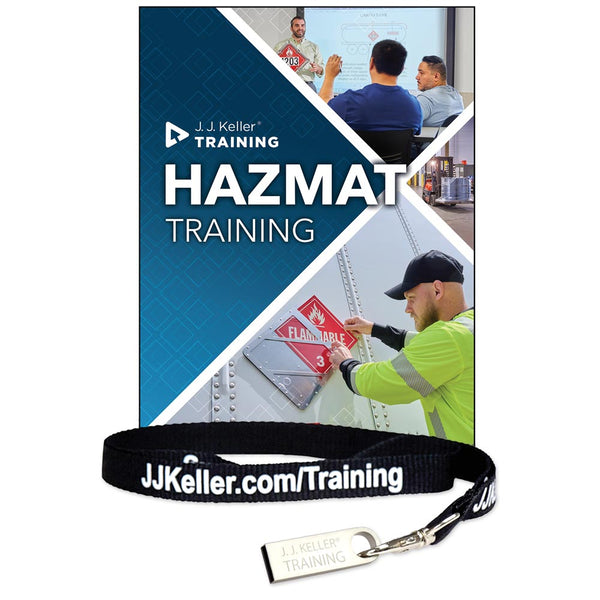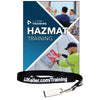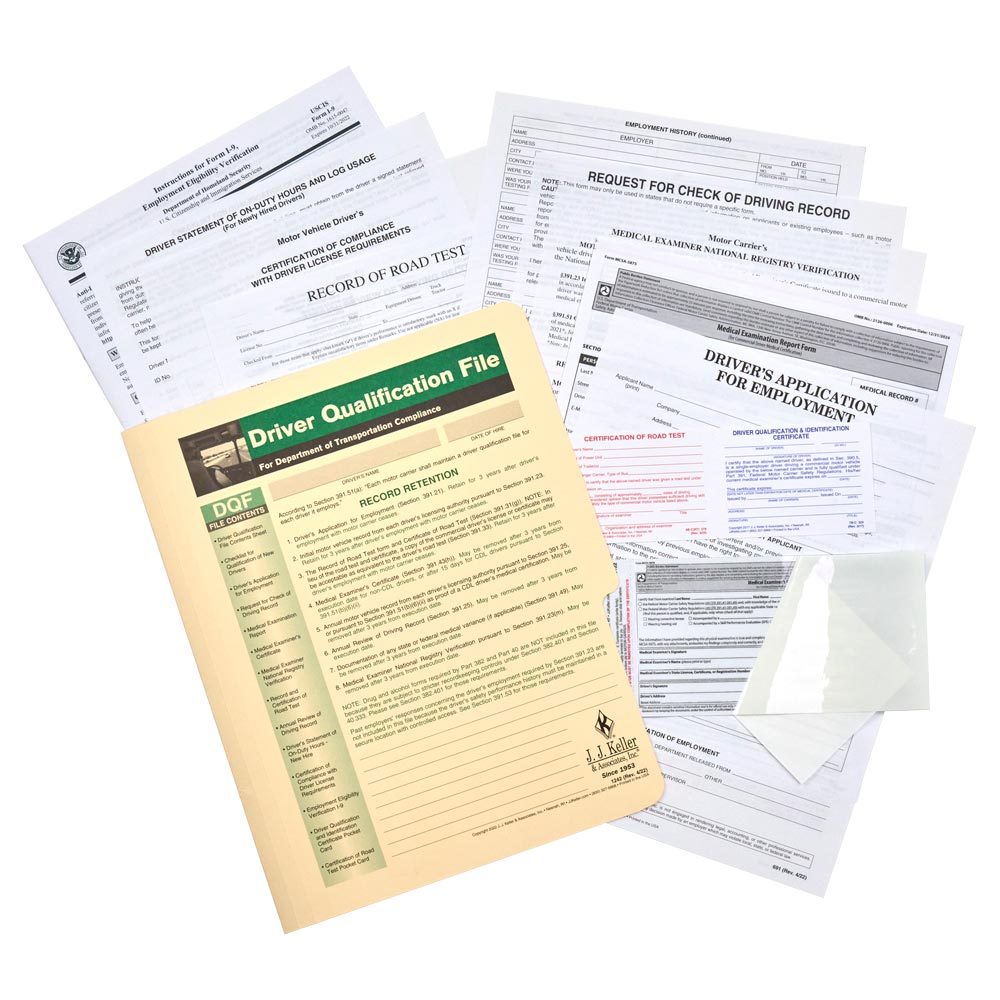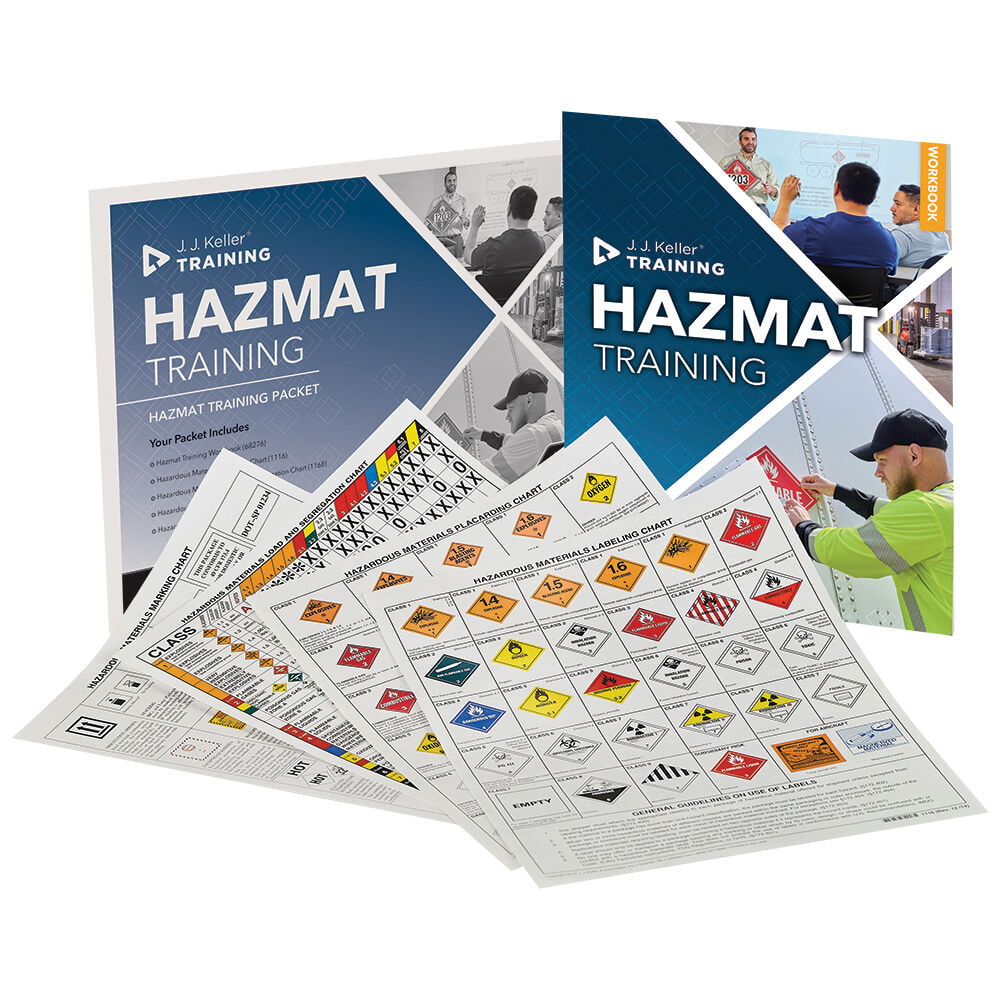Hazmat Training Program - USB
$395.00
Product Details
Hazardous materials (hazmat) can be a risk to health, safety, and property when shipped. The Department of Transportation (DOT) decides what items are considered hazmat. Four examples of hazmat are gasoline, oxygen, propane, and fireworks.
The Hazardous Materials Regulations (HMR) are a set of rules created by The Pipeline and Hazardous Materials Safety Administration (PHMSA). Hazmat workers need to follow the rules to make sure all hazmat is packed and handled safely during shipping. The rules help communicate the possible hazards of any material being shipped to everyone involved. This includes motor carriers, hazmat workers, and emergency crews.
The HMRs require every hazmat employer to train, test, and certify every hazmat employee within 90 days of employment, within 90 days of any change in job function, and every three years as a refresher in four areas: general awareness/familiarization training, safety training, security awareness training, and function-specific training. In addition, drivers who transport hazmat are also required to take modal-specific training.
Please note: 49 CFR 172.704(d) of the HMR requires each hazmat employer to create and retain a record certifying the current training of each hazmat employee. It is the responsibility of the hazmat employer to complete additional company-specific training in order to formally certify each learner. Trainers may use the J. J. Keller-issued certificate for compliance with the recordkeeping requirements in Section 172.704(d)(3). The trainer and the trainer’s company are considered the “person providing the training” in Section 172.704(d)(4). Because of this, trainers should maintain additional records documenting a description or copy of the additional company-specific training materials provided to each learner.
- Regulations Covered: 49 CFR Parts 107-180 and 49 CFR Part 397
- Intended Audience: All hazmat employees, in all industries, who are responsible for any aspect of shipping or transporting hazardous materials
- Languages: English and Spanish
What's Covered
After viewing the 13 videos below, learners will have a better understanding of these important Hazmat topics:
General Awareness:
- Describe what information on the hazmat table is needed to determine if a material is hazardous
- Recognize the hazard classes and divisions on the hazmat table
- Recognize examples of a hazardous substance, hazardous waste, marine pollutant, elevated-temperature material, and limited quantity material
- Identify the purpose of shipping papers, markings, labels, and placards
Hazmat Training: Safety:
- Identify the emergency response information that needs to be provided for a hazmat shipment
- Describe where the emergency response phone number needs to be located and how it needs to be monitored
- Describe where the carrier’s contact information needs to be located and who needs to use it
Security Awareness:
- Recognize the importance of hazmat security and potential security threats
- Identify ways to reduce the risk of security threats
- Identify suspicious behaviors
- Describe how to report suspicious activity
Highway Transportation:
- Explain what additional licensing and registration requirements are necessary before transporting hazmat
- Decide what hazmat documentation is needed and where to store it during transport
- Take precautions to keep your cargo safe and secure during transport
- Discuss what you, the driver, will do in the event of a hazmat incident or accident
Labeling:
- Explain labeling specifications and requirements
- Identify hazmat labeling and describe what each label means
Lithium Batteries:
- Determine proper shipping requirements for lithium batteries
- Identify appropriate packaging for transport
- Recognize which marking and labels are required
- Explain when shipping papers must be completed
Loading, Unloading, and Load Segregation:
- Apply loading and unloading requirements for safe hazmat handling
- Navigate the segregation and compatibility tables to determine proper strategies for the storage and transportation of hazardous materials
Marking:
- Explain marking specifications and requirements for both non-bulk and bulk packaging
- Identify hazmat markings and describe what each marking means
Packaging:
- Identify the manufacturer’s markings on a hazmat packaging and describe what each code means
- Explain how to select appropriate hazmat packaging
Placarding:
- Explain placarding specifications and requirements
- Identify hazmat placarding and describe what each placard means
Reporting an Incident:
- Explain when and how to report a hazmat incident via telephone
- Identify when and how to submit a written incident report to PHMSA
Shipping Papers:
- Explain the importance of shipping papers and how to fill them out
- Identify shipping paper retention requirements
The Hazardous Materials Table:
- Explain what the hazmat table is and why it is important in the hazmat transportation process
- Navigate the hazmat table to verify information regarding hazardous materials
Program Content
Main Video Program
- General Awareness (9 mins)
- Safety (9 mins)
- Security Awareness (11 mins)
- Highway Transportation (18 mins)
- Labeling (13 mins)
- Lithium Batteries (22 mins)
- Loading, Unloading, and Load Segregation (15 mins)
- Marking (20 mins)
- Packaging (13 mins)
- Placarding (18 mins)
- Reporting an Incident (10 mins)
- Shipping Papers (15 mins)
- The Hazardous Material Table (17 mins)
Trainer Tools
Employee Packet




